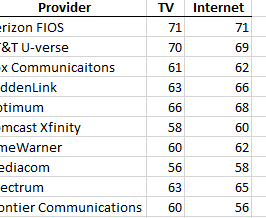Question
What hypothesis testing procedure would you use based on these data to determine whether the average test scores were higher for students with smartphone bans
- What hypothesis testing procedure would you use based on these data to determine whether the average test scores were higher for students with smartphone bans compared to those with no smartphone ban?
The appropriate hypothesis testing procedure would be a two-tailed independent samples t-test. This test is used when comparing the means of two independent groups, in this case, students with smartphone bans and those without. The null hypothesis (H0) would be that there is no difference in the average test scores between the two groups (i.e., ?ban = ?no ban). The alternative hypothesis (H1) would be that there is a difference (i.e., ?ban ? ?no ban).
- Why might this evidence alone not convince you that smartphone bans do/do not have a positive average effect on learning (or at least, on test scores)?
This evidence alone might not be convincing due to several potential confounding variables. For instance, schools that ban smartphones might differ from those that do not in terms of socioeconomic status, teacher quality, or curriculum. These factors could also influence test scores, making it unclear whether any observed difference is due to the smartphone ban or these other variables. Additionally, the study does not account for student compliance with the ban or the duration of the ban, both of which could affect the results.
- Based on your answer to part 2, if you were in charge of the study, how would you change it to make the results more conclusive, (i.e., to reduce possible alternative explanations or confounding variables)? Would you need to change the hypothesis testing procedure at all to account for the change(s) you chose? Explain.
To make the results more conclusive, I would consider several changes. First, I would randomly assign schools to either the smartphone ban or no ban condition to control for potential confounding variables. This would allow for a more direct comparison of the effects of the ban. Second, I would collect data on student compliance with the ban and the duration of the ban to ensure that any observed effects are not due to these factors. Lastly, I would consider collecting data on other measures of learning, such as classroom engagement or critical thinking skills, to provide a more comprehensive picture of the ban's effects.
The hypothesis testing procedure would remain the same (two-tailed independent samples t-test) as the outcome variable (test scores) and the groups (students with/without smartphone bans) have not changed. However, the results would be more robust and convincing due to the control of confounding variables and the inclusion of additional measures of learning.
Final answer: The appropriate hypothesis testing procedure is a two-tailed independent samples t-test. However, this evidence alone might not be convincing due to potential confounding variables. To make the results more conclusive, consider random assignment, collecting data on student compliance and duration of the ban, and including additional measures of learning. The hypothesis testing procedure would remain the same.

Step by Step Solution
There are 3 Steps involved in it
Step: 1

Get Instant Access to Expert-Tailored Solutions
See step-by-step solutions with expert insights and AI powered tools for academic success
Step: 2

Step: 3

Ace Your Homework with AI
Get the answers you need in no time with our AI-driven, step-by-step assistance
Get Started


